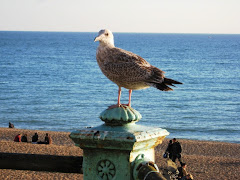
...with the closure of The Coleherne pub in Earl's Court.
The Coleherne used to vie with the Queen's Head in Chelsea as London's oldest gay pub. Gay men started frequenting the venue in the 1950s, and by the 1970s it was well known as a centre of gay life in London. Earl's Court became one of the best-known 'gay ghettoes', formed partly as a result of the post-war changes in housing, which saw the larger houses around Earl's Court broken up into flats. More well-heeled than Paddington, but cheaper than Chelsea, a distinctive community grew up here which found its zenith in the 1970s and 1980s.
At this time a committee had to be set up to try and improve relations between the patrons of the Coleherne and residents in the surrounding area, fed up of the areas in front of their homes being used as a cruising ground for gay men. The pub - a traditional venue, smoky and atmospheric, and popular with the leather-and-denim crowd - was sufficiently well known to feature in Armistead Maupin's book 'Babycakes', but rather less happily it was also one of the stalking grounds of serial killers Dennis Nilsen and Colin Ireland.
Earl's Court attracted a number of other gay venues during the 1980s and early 1990s: Copacabana, the Boltons, Graffiti, Bromptons and the eerily-named Catacombs. But times have changed: greater liberation and toleration means that gay men now live across London's suburbs, the desire to live side by side in a 'gay ghetto' now no longer a necessity, and the centre of exclusively gay bars has moved to Soho. The Coleherne itself began to suffer: an expensive makeover in the 1990s wasn't entirely successful, and robbed it of much of its character, and the loss of real ale made it less attractive to those who wanted a decent pint.
All Earl's Court's gay bars have now closed, including the Philbeach Hotel. The Coleherne was the last, and now it is gone, reopened in its new guise as The Pembroke, a straightforward, if fairly unremarkable gastro-pub. Only the Clone Zone shop (its parent company now in administration) and Balans, the gay-run restaurant chain, survive to indicate that once this was once a unique and colourful part of London...








